How to Make Beef Tallow
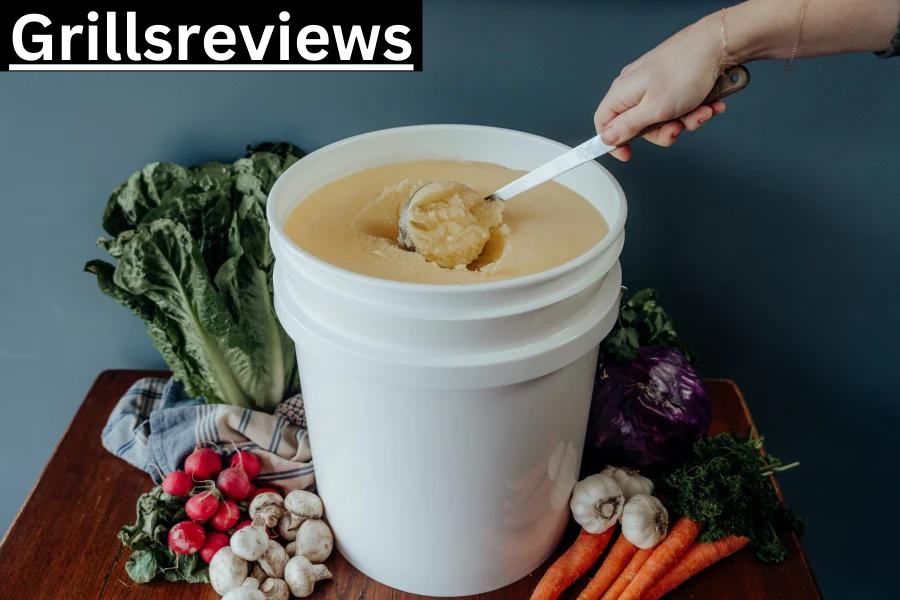
Use spare fat trimmings from the brisket or other areas of the animal to make your own beef tallow. Beef tallow is a very adaptable fat that is nutritious and wholesome, making it ideal for baking, soap-making, and skincare. Additionally, making it at home is easy.
What is Beef Tallow?

Rendering fat is referred to informally as tallow. Cattle tallow is specifically cattle fat that has been purified and boiled down. Tallow is an excellent alternative to oil and butter in recipes since it becomes a liquid when heated and a solid when cooled.
Before vegetable shortening and other oils became widely utilized, tallow was utilized considerably more frequently, but there is no reason why it cannot be employed in home cooking today. It’s also a terrific way to get the most of your money when buying a whole-pack brisket by using up all the trimmings left over from cutting a brisket.
Beef tallow is incredibly adaptable. It was frequently used in the past to create items for the skin, including candles, soap, and many other uses. For those of us who enjoy BBQ, beef tallow is a terrific ingredient to keep on hand for cooking because it’s bursting with flavor and adds a unique dimension to potatoes and sautéed vegetables.
What can you use beef tallow for?
There are many diverse cooking applications for beef tallow.
It is frequently used to cook foods like chicken wings and french fries due to its high smoke point, which ranges from 420 °F to 480 °F. Beef tallow has a mild beef flavor and is a great substitute for butter and many oils.
Using Tallow in BBQ
In the BBQ scene, beef tallow has gained popularity not just for cooking but also for smoking brisket. More fat is said to keep the brisket moist and enhance its flavor.
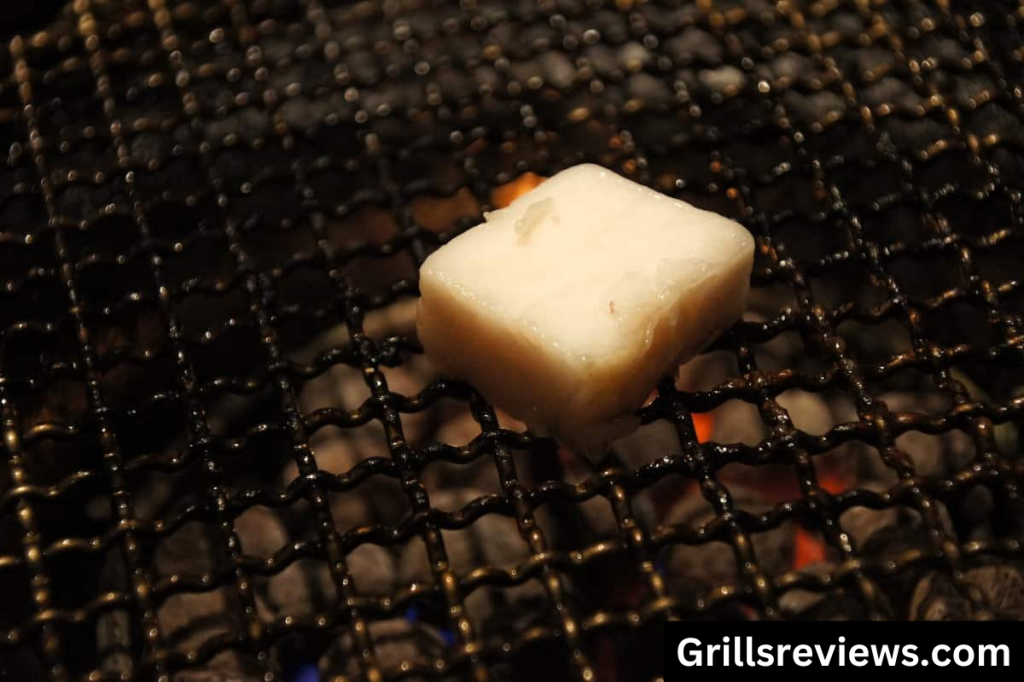
Beef tallow is used in barbecue in the following ways:
Injection: To prevent a brisket from drying out while being smoked, I’ve seen tallow injected directly into its flat.
Wrapping: When wrapping brisket, folks may occasionally use heated tallow to coat the beef, giving it a glossy, juicy appearance. I’ve done that a few times, and my briskets almost always come out well.
Binder: In order to make the rub adhere to the meat, I’ve also seen folks use tallow as a binder rather than a neutral oil or mustard.
Materials Required to Make Beef Tallow:
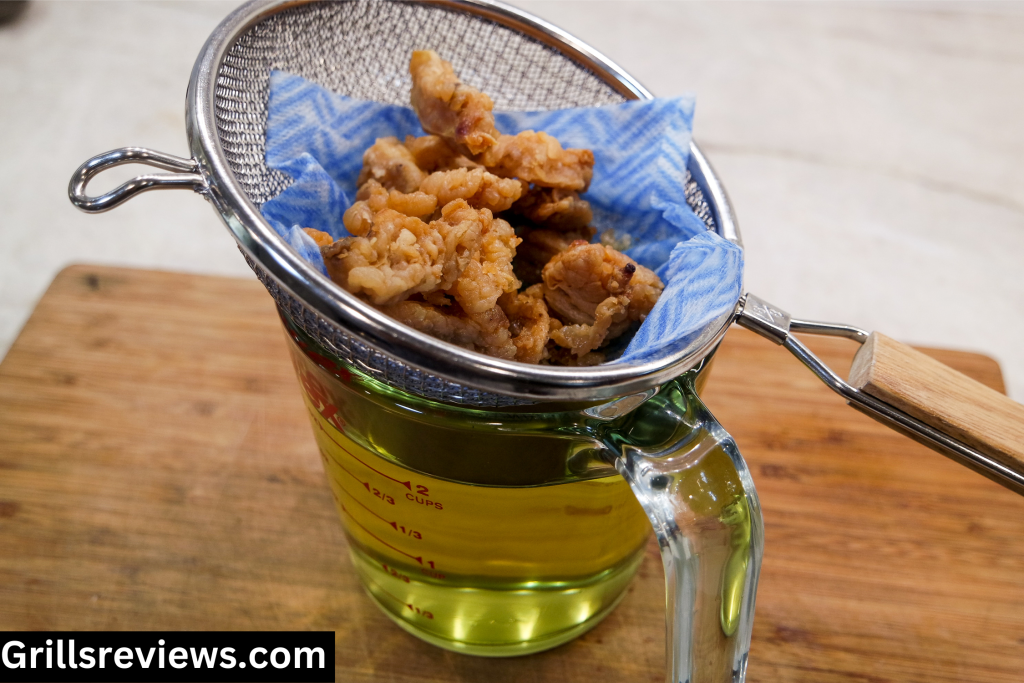
Slow-cooker, 16-qt stock pot, or oven-safe pan
Food processor (optional)
Funnel
Fine-mesh strainer
Large bowl or container
Glass jar, such as a wide mouth mason jar
Piece of cotton cheesecloth
The tallow with any spices you desire to use
A beef chop of your choosing that still has fat on it
How to Make Beef Tallow (7-Steps)
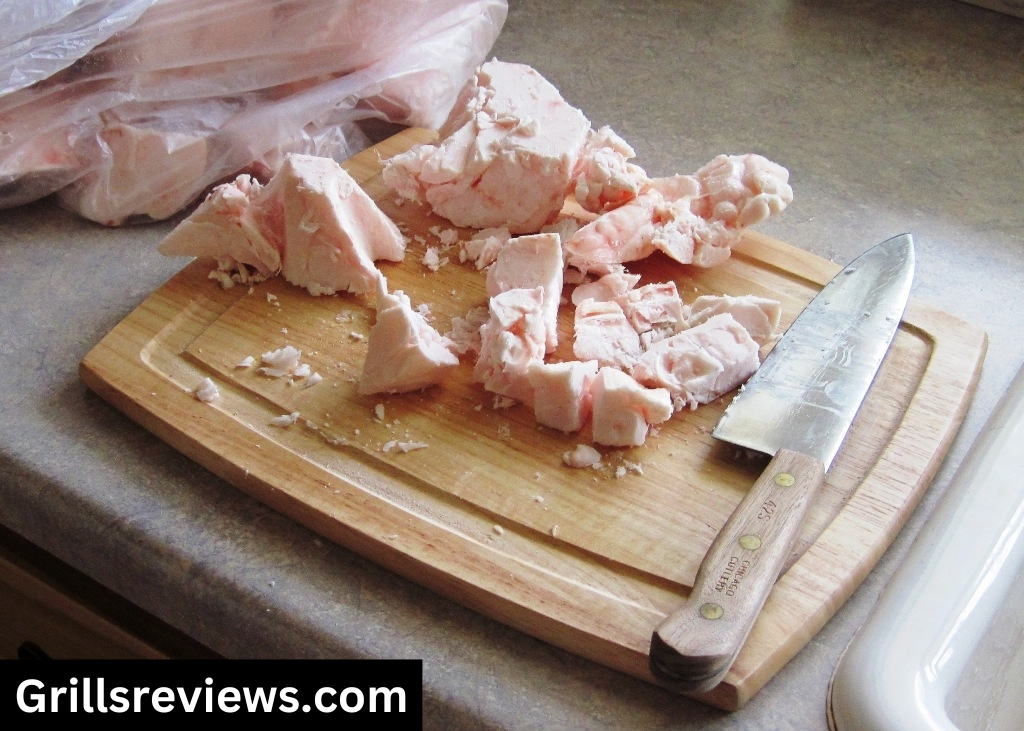
You’re ready to render some beef tallow once you’ve acquired all your necessary tools. Do not let this procedure frighten you! Once you give it a try, you’ll see that it’s really simple.
Step One:
Trim the fat off the beef, making sure to remove all visible meat and muscle.
Step Two:
Slice or shred the frozen fat by hand or in a food processor once it has firmed up in the freezer.
Step Three:
Place the fat chunks in a slow cooker set to low heat, a stockpot set to low heat, or an oven-safe pan set to 250 degrees Fahrenheit.
Step Four:
Slowly boil, stirring occasionally, until the fat turns into a clear liquid with floating dry cracklings.
Step Five:
Remove from heat and pour the liquid into a big basin or container using a fine-mesh strainer that is optionally lined with cheesecloth.
Step Six:
The cracklings can be retained and used as a garnish for a side dish or salad after being removed from the sieve.
Step Seven: (tallow in storage)
Put the glass storage jar in the refrigerator with the lid on after using the funnel to pour the liquid fat into it. Spices can now be added to the liquid before it is stored, if you so desire.
When the liquid fat cools, it will solidify, and you will have your very own handmade cow tallow! For up to three months, tallow may be kept in the fridge without any problems.
Final Thoughts on Beef Tallow
We hope this article will help you produce beef tallow at home if you’ve been interested in using it.
Related Posts
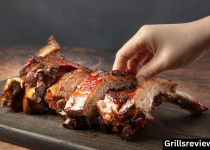
How Long Do Ribs Last in the Fridge – Solved 2023
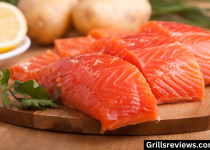
How Long Does Fish Last In The Fridge? (And the Bad Signs)
